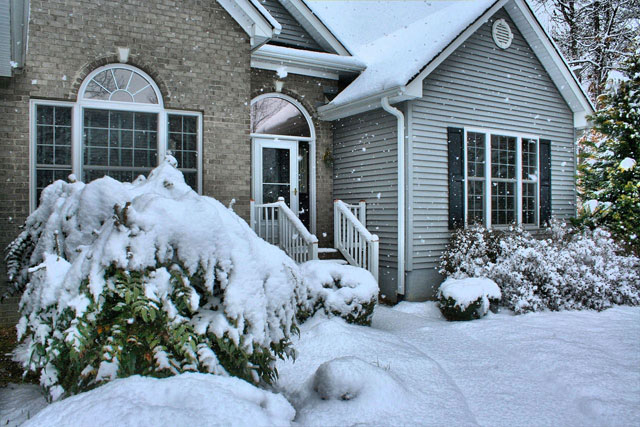Save money and improve safety with this action plan
Winterizing your home means extending the life of your fuel supply by insulating walls and attics, caulking and weather-stripping doors and windows, and installing storm windows or covering windows with plastic. Some insulation projects can be implemented now, while other larger projects (like window replacement) require warm weather to complete.
In addition to big projects, there are numerous small ways you can winterize your home, and be ready for the severe cold and memorable storms that are possible. It is never too late to take these steps. Here are some suggestions of easy steps that make a difference:
- Clear rain gutters; repair roof leaks and cut away tree branches that could fall on a house or other structure during a storm.
- Maintain heating equipment and chimneys by having them cleaned and inspected every year.
- Insulate pipes with insulation or newspapers and plastic and allow faucets to drip a little during cold weather to avoid freezing. Running water, even at a trickle, helps prevent pipes from freezing.
- Invest in cellular blinds or insulating curtains for all windows and glass doors. Keep them drawn at night, and when sunny open them up for passive solar gain during the day.
- Install a new WiFi Thermostat. This handy device allows you to monitor the temperature of your home, even when you are away. If extreme cold comes through when you are on vacation you can check in and be assured your house is not freezing up.
- Be sure your home has sufficient supply of heating fuel. During extreme weather, it may become difficult for us to get to your home to make deliveries due to obstructed roads or extreme icing. Keeping a minimum of at least 1/4 tank is good sense – and means running out is unlikely even if roads are closed for a couple days. Having a back-up fuel, such as wood, and even a whole house generator is also good idea.
- Be ready for snow and ice removal – shovels, rock salt, sand. Prevent injury and stretch and don’t overdo it as you scoop up the snow. Be sure to clear snow off your roof before ice forms.
- Are your Emergency kits ready?
- In your car you may want to have: a shovel, windshield scraper and small broom, flashlight, battery powered radio, extra batteries, blanket(s), snow boots, first aid kit with pocket knife, tow chain or rope, road salt and sand, booster cables, emergency flares, fluorescent distress flag.
- In your home, you may need: minimum one gallon of water per person per day for at least three days, at least a three-day supply of non-perishable food, battery-powered or hand crank radio and a NOAA weather radio with tone alert and extra batteries for both, flashlight and extra batteries, first aid kit, wrench or pliers to turn off utilities, cell phone with chargers (battery or solar chargers in case power is out).

